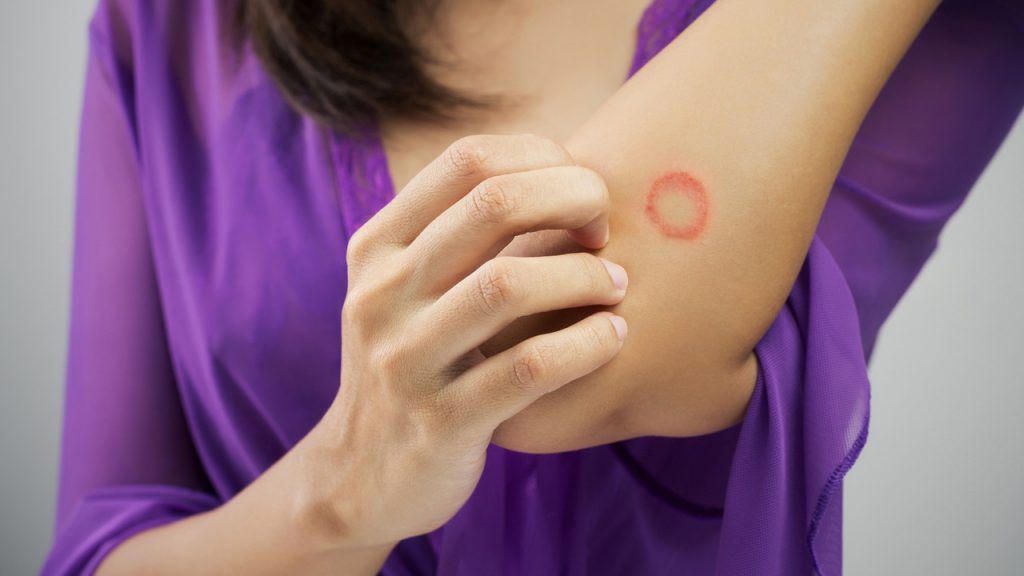
Nội dung bài viết / Table of Contents
This post is also available in: Tiếng Việt (Vietnamese)

Ringworm, also known as dermatophytosis or tinea, is a fungal infection of the skin.
The infection initially presents with red patches on affected areas of the skin and later spreads to other parts of the body. The infection may affect the skin of the scalp, feet, groin, beard, or other areas.
Ringworm can go by different names depending on the part of the body affected.
Ringworm is extremely common. This infection can affect both humans and animals. It can affect patients at any age. It can be managed by reducing your risk factors. Please discuss with your doctor for further information.
The common symptoms of ringworm are:
If you’re experiencing dermatophytosis in your nails, they may become thicker or discolored, or they may begin to crack. If the scalp is affected, the hair around it may break or fall off, and bald patches may develop.
There may be some symptoms not listed above. If you have any concerns about a symptom, please consult your doctor.
If you have any signs or symptoms listed above or have any questions, please consult with your doctor. Everyone’s body acts differently. It is always best to discuss with your doctor what is best for your situation.
Three different types of fungi can cause this infection. They are called trichophyton, microsporum, and epidermophyton. It’s possible that these fungi may live for an extended period as spores in soil.
Humans and animals can contract ringworm after direct contact with this soil. The infection can also spread through contact with infected animals or humans. The infection is commonly spread among children and by sharing items that may not be clean.
Anyone can develop ringworm. However, the infection is very common among children and people who own pet cats. Both cats and dogs can catch ringworm and then pass it on to humans who touch them. Signs to be aware of in pets include:
You may be more likely to develop dermatophytosis if you come into contact with the fungi while you’re wet or if you have minor skin injuries or abrasions. Using a public shower or public pool areas may also expose you to the infective fungi.
If you’re often barefoot, you may develop ringworm of the feet (athlete’s foot). Those who often share items such as hairbrushes or unwashed clothing also have an increased risk of developing the infection.
The information provided is not a substitute for any medical advice. ALWAYS consult with your doctor for more information.
Your doctor will diagnose ringworm by examining your skin and possibly using a black light to view your skin in the affected area. The fungus will fluoresce (glow) under black light. If you’re infected, the areas of the skin where fungus is located will glow.
Your doctor may confirm a suspected diagnosis of ringworm by requesting certain tests:
Your doctor may prescribe various medications depending on the severity of your ringworm infection. Jock itch, athlete’s foot, and ringworm of the body can all be treated with topical medications, such as antifungal creams, ointments, gels, or sprays. Ringworm of the scalp or nails may require prescription-strength oral medications such as ketoconazole, griseofulvin, or terbinafine.
Over-the-counter medications and antifungal skin creams may be recommended for use as well. Over-the-counter products may contain clotrimazole, miconazole, terbinafine, or other related ingredients.
The following lifestyles and home remedies might help you cope with ringworm:
If you’ve been scratching your skin frequently due to the infection, you may also develop a staph or strep infection of the skin. Your doctor may prescribe antibiotics to treat this bacterial infection as you continue your treatment for the ringworm.
If you have any questions, please consult with your doctor to better understand the best solution for you.
Sources: